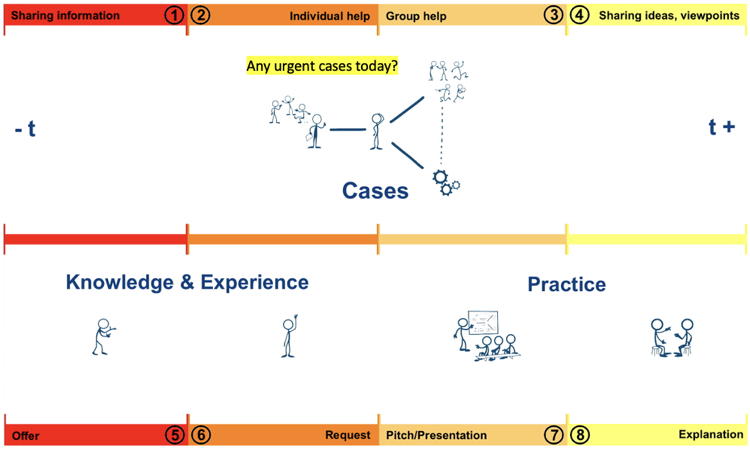Workshop example: A Team Leader Best Practices Exchange
Processes for sharing and learning; trying out ideas, testing material and finding solutions
Purpose and objectives of the workshop
The core activity of the Best Practices Exchange is a 100-minute teleconference where Engineering Team Leaders share experiences and ideas (in English or French).
Leaders from different countries, companies and cultures discuss a wide range of challenges. They use the safe, structured environment of the Exchange to:
- Solve problems, practice encounters, get feedback
- Learn new techniques and refine old ones
- Exchange information and, above all, meet people!
The Exchange is open to anyone who believes:
- They can help others through the Exchange
- They will benefit from the Exchange
How does a session work?
Topics are chosen by participants in the run-up to a session and at the start of the session itself – see examples in the next section.
Sessions last 100 minutes and start at five past the hour. The agenda is as follows:
- Inclusion: brief introductions from each participant
- Recap of session rules and main process
- Topic selection and agenda setting
- THE WORK ! – see below for the processes used
- Summary and farewells
Please see the video above for more details.
Processes used
The overall workshop process is a simplified version of Jérôme Curnier’s “Entre 2” and is based on a template of 8 sub-processes, as shown.
As topics are presented by workshop participants, they are placed on the template according to the process which is best adapted to deal with them. If, for example, someone explains that their team seems unable to use MS Teams efficiently, this topic might be place in section 8 of the template: a request for knowledge and experience.
Each of the 8 sections has a well-defined process associated with them and the workshop facilitator uses that process to help participants address their topics in an optimum way.
